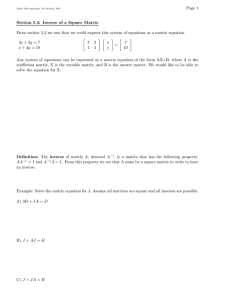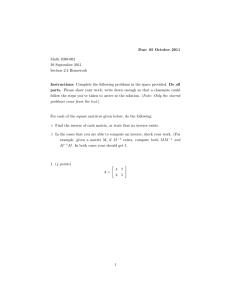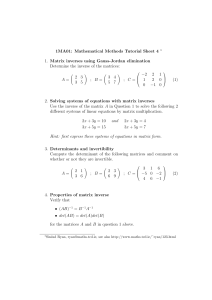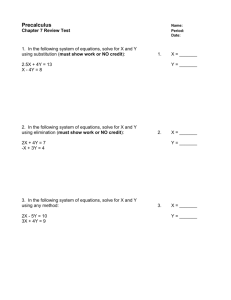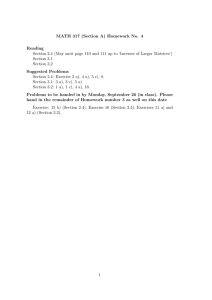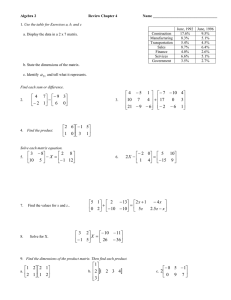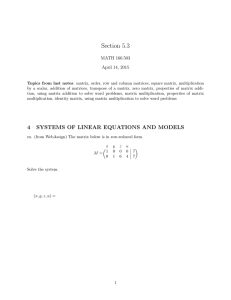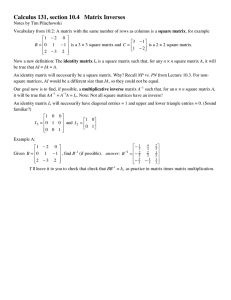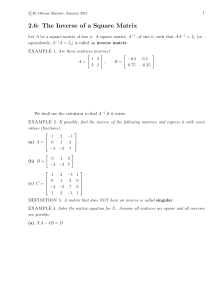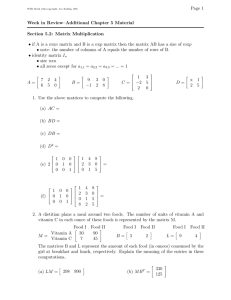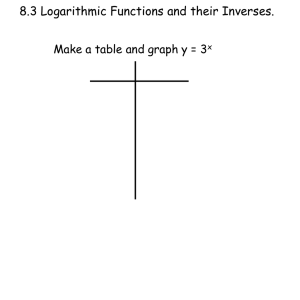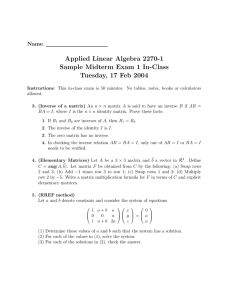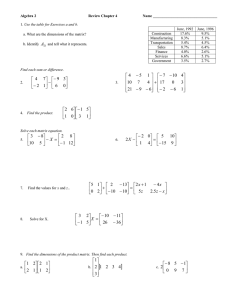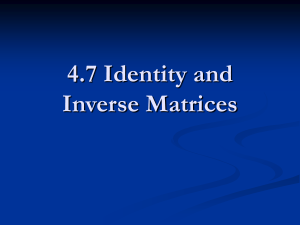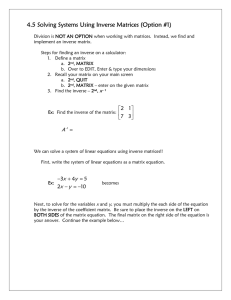Page 1 Section 2.6: Inverse of a Square Matrix
advertisement
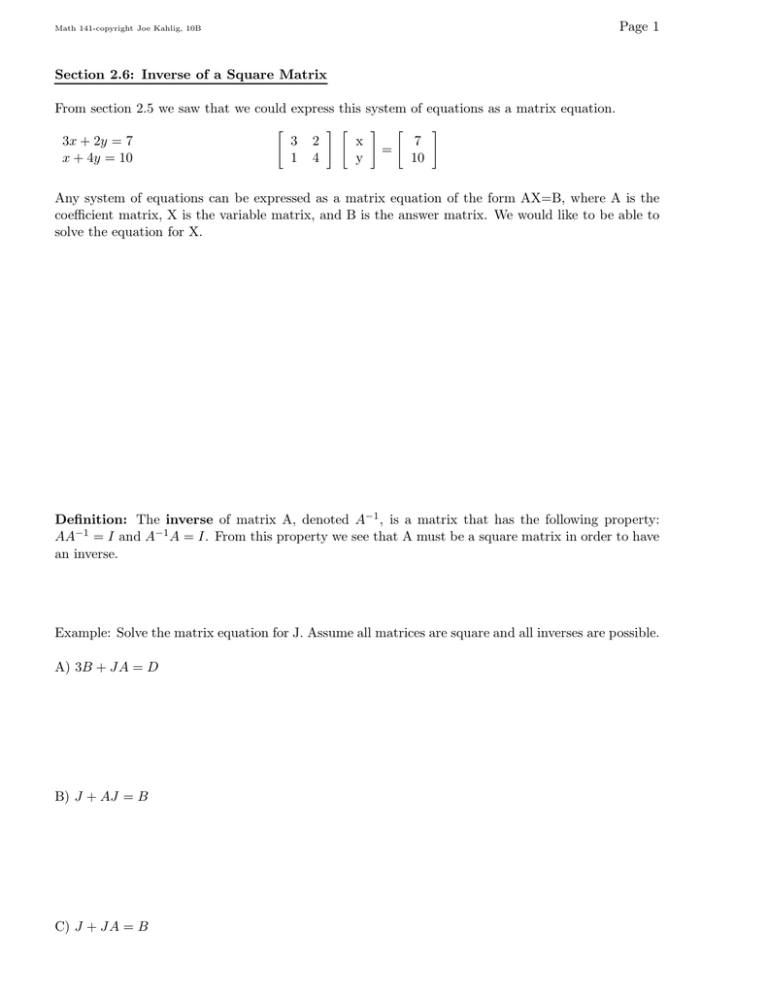
Page 1 Math 141-copyright Joe Kahlig, 10B Section 2.6: Inverse of a Square Matrix From section 2.5 we saw that we could express this system of equations as a matrix equation. 3x + 2y = 7 x + 4y = 10 " 3 1 2 4 # " x y # = " 7 10 # Any system of equations can be expressed as a matrix equation of the form AX=B, where A is the coefficient matrix, X is the variable matrix, and B is the answer matrix. We would like to be able to solve the equation for X. Definition: The inverse of matrix A, denoted A−1 , is a matrix that has the following property: AA−1 = I and A−1 A = I. From this property we see that A must be a square matrix in order to have an inverse. Example: Solve the matrix equation for J. Assume all matrices are square and all inverses are possible. A) 3B + JA = D B) J + AJ = B C) J + JA = B Page 2 Math 141-copyright Joe Kahlig, 10B Exampe: If possible, compute the inverse to these matrices. 2 A) A = -4 3 B) B = " 1 2 4 -6 5 0 3 2 C) C = -1 3 -4 3 -7 -2 1 1 2 6 # 12 5 7 Example: Are these matrices inverses? A= " 4 2 5 3 # B= Example: Solve for x, y, and z. x + 3z = 2 + y y + 2x = 2 − 2z 2y − z + 2x = −3 Example: Solve for x, y, and z. x + 2y + 3z = 2 2x + 5y + z = 1 3x + 7y + 4z = 3 " 1.5 -1 -2.5 2 #

